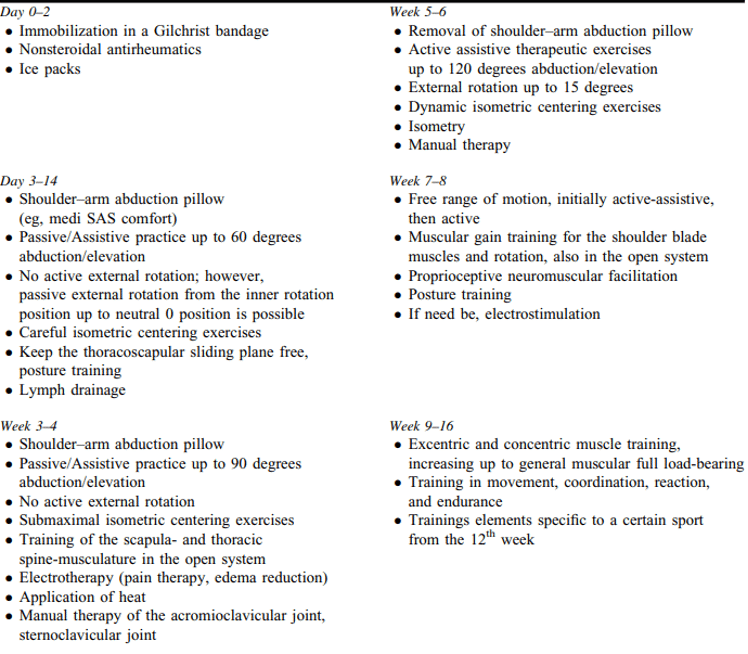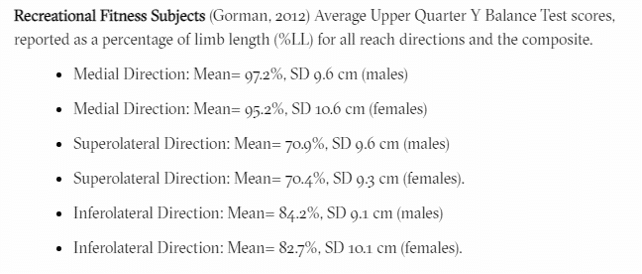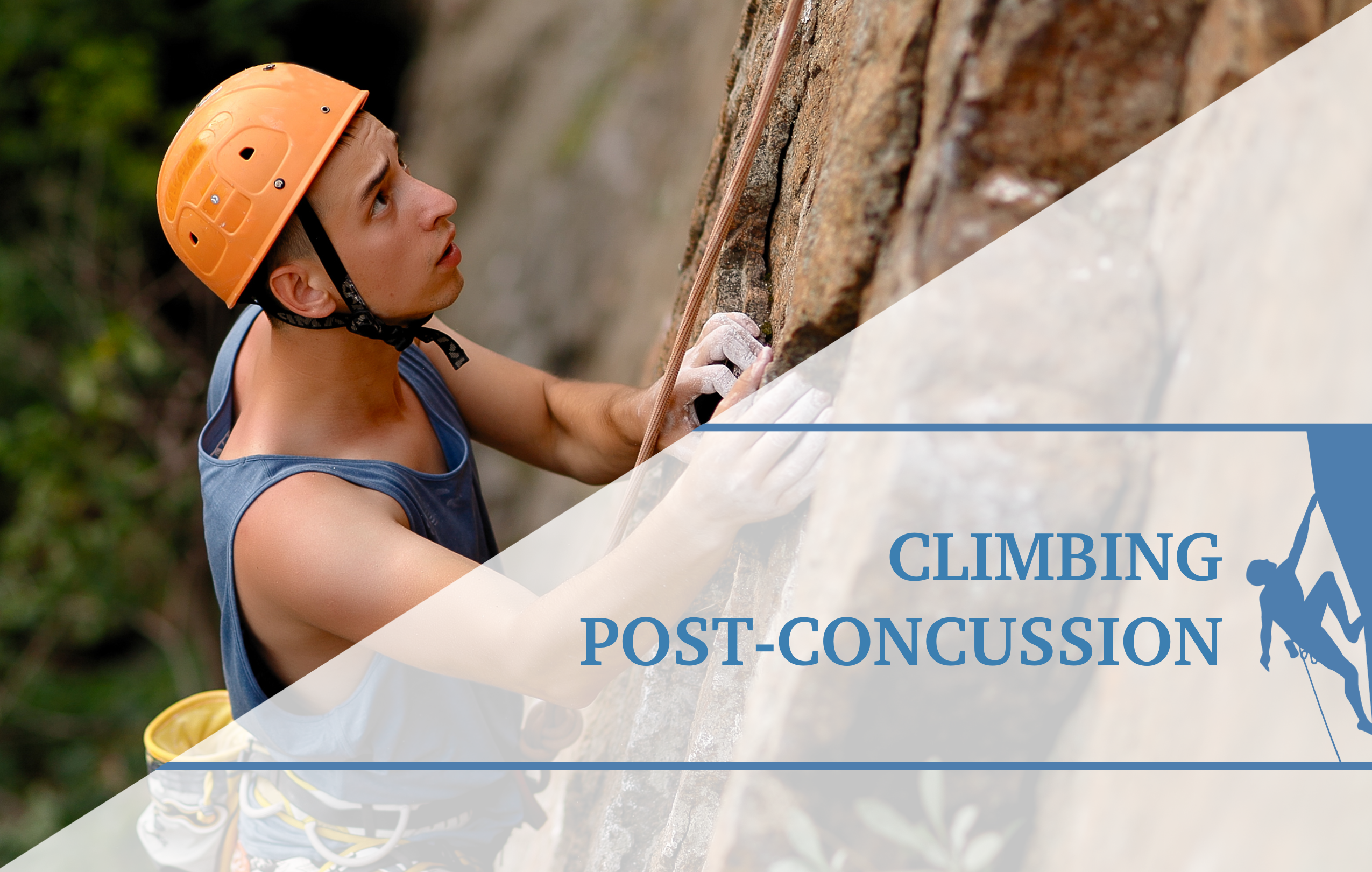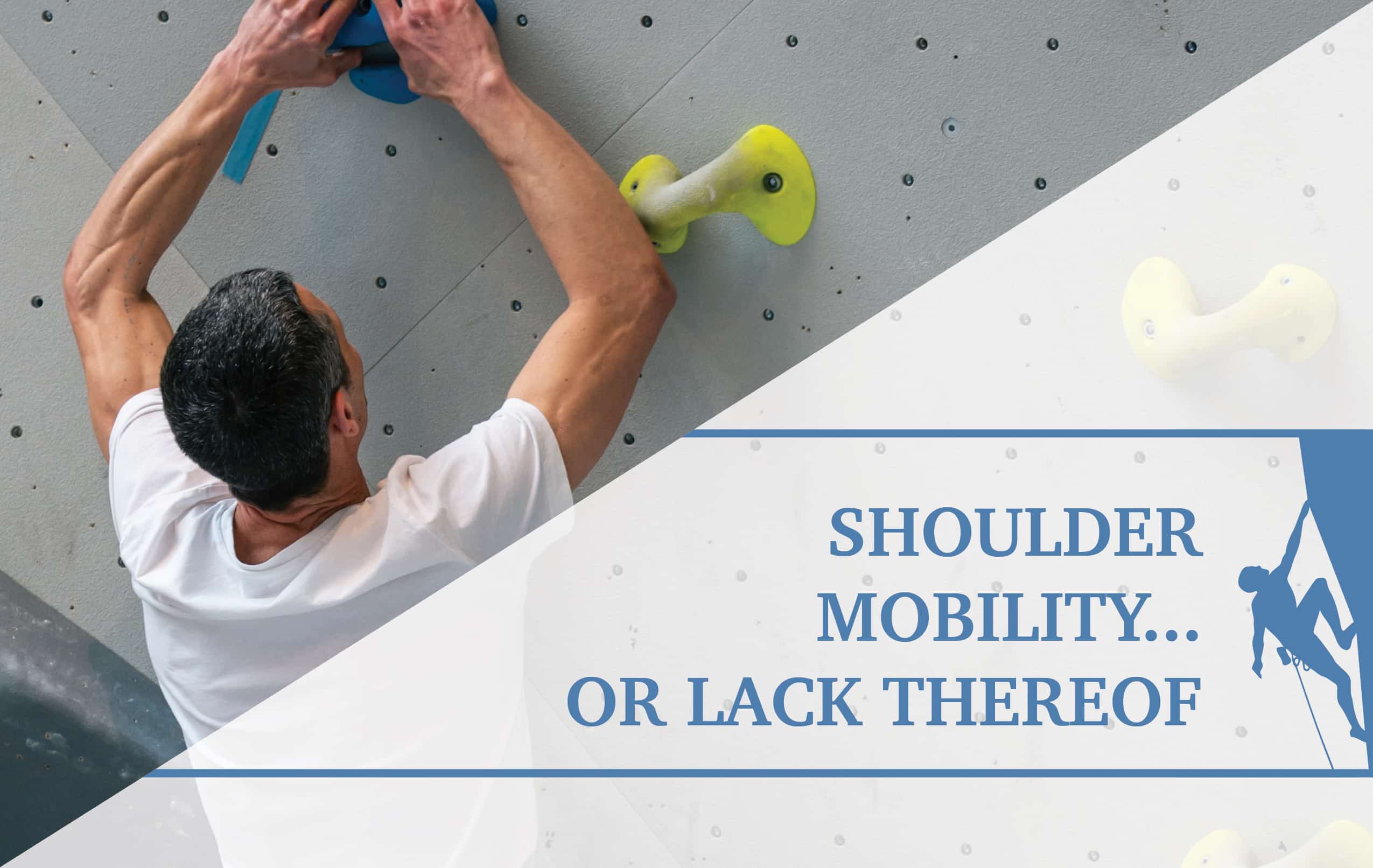Return to Climb After a Labral Tear and/or Rotator Cuff Surgery
You’ve been training hard to build the finger strength for pushing your climbing grade up a whole value for months. Throughout the training time, your forearms are less and less fatigued after each climb within your training range. However, your shoulder is starting to hurt each training day, but you’re so close to pushing your grade that you keep training. You decide to commit to pushing through your project even after a year. Everything was going great until the crux. You take your time resting before the iron cross move, and then commit to the reach high and to your right. Upon your hand hitting the hold you can grip it and hold on for a brief moment, but then excruciating pain in your shoulder forces you to let go. Once you are lowered to the ground after your attempt, you find that you are struggling with lifting your arm. You find out that you tore your rotator cuff and have a SLAP tear as well. You have surgery to repair these injuries and are eager to get back to climbing. What are your next steps?
Rotator Cuff and SLAP Tears
This is maybe the result of a chronic rotator cuff injury that resulted in a full tear of at least one of the four muscles that form it. Prehab physical therapy can be valuable to maintain strength of the untorn musculature, but the most likely outcome is surgery to reattach the muscle. These often occur simultaneously with a superior labral tear from anterior to posterior direction.
Signs and Symptoms
Rotator cuff tears and SLAP tears can occur acutely in traumatic onsets with or without a shoulder dislocation or can be the result of chronic non-traumatic etiology. Symptoms can involve pain that has been increasing over time, loss of function, decreased sleep due to pain, and a sudden onset of weakness (acute trauma).1 These will result in difficulty when performing overhead tasks, specifically with shoulder flexion, abduction, and external rotation activities.1 Additionally, patients may report popping when reaching requires these positions.
Post Surgery Rehab
Every surgeon will have a different idea when it comes to rehabilitation following surgery, so it is important to consult with them before beginning anything new. Below is an example of a protocol that was followed and was successful for 58% of climbers to return to 100% of their previously climbing ability, and 42% to return to climbing with minimal complaints while performing at full exertion.1

Received from Simon M, Popp D, Lutter C, Schöffl V. Functional and sports-specific outcome after surgical repair of rotator cuff tears in rock climbers. Wilderness & Environmental Medicine. 2017;28(4):342-347. doi:10.1016/j.wem.2017.07.003
Full sports integration isn’t recommended any earlier than 6 months after surgery, but the introduction of sports related activities are generally allowed after 12 weeks. The exercises focused on are for after the initial 12 weeks of rehab, with the goal of developing appropriate strength, functional mobility, and stability before returning to climbing.1 We would expect values assessed with the previously mentioned tests to be close to the norms for healthy active adults before returning to climbing.
Assessment
Strain tests only to be done after surgeon approval (likely after at least 12 weeks) Cluster of tests can provide clinically relevant data for return to sport:
Functional Testing
Y-balance test – Upper quarter
Tests for upper extremity dynamic stability as well as limb symmetry for end range of motion for the upper quarter.
- Begin in a push up position.
- Perform medial reach, inferolateral reach, and superolateral reach on the tape or system as far as possible for both sides
- Measure the distance of each reach.
- 3 trials for each direction of each arm.

Data retrieved from Upper Quarter Y-Balance Test | RehabMeasures Database (sralab.org)
Closed kinetic chain upper extremity stability test (CKCUEST)
Tests for upper extremity dynamic stability and proprioception.
- Athletic tape 3 feet apart
- Hands placed at ends of tape in push up position.
- Touch opposite line of each hand and alternate to perform as many as possible in 15 seconds. Touches are counted.
- Perform 3 trials with 45 second breaks between each. Take average.
- 5 touches for males, 20.5 touches for females as cut offs for risk of increased injury.
- Minimal detectable chance demonstrating meaningful change for active males: 2.82 touches.
- Minimal detectable chance demonstrating meaningful change for active females: 3.91 touches.
Seated Medicine Ball Throw Test
Assesses dynamic power of the upper extremities.
- Start sitting with back flat against a wall with legs straight in front of you.
- Throw weighted medicine ball (males 6lbs and females 4lbs) from chest and keep your back against the wall.
- Throw at a 45-degree angle.
- Distance measured from wall to where the ball lands.
- Norms Male:
- 18-25 yo healthy male athletes – 304.6 cm2
- 26-33 yo healthy male athletes – 315.9 cm2
- 34-50 yo healthy male athletes – 308.6 cm2
- Norms Female:
- 18-25 yo healthy female athletes – 245.9 cm2
- 26-33 yo healthy female athletes – 227.8 cm2
- 34-50 yo healthy female athletes – 234.4 cm2
Mobility Training
Active Assisted Range of Motion Scaption
- Aim: Promote further range of motion in a functional range for climbing beyond available
- Equipment: Dowel or broom handle
- Set up: Standing or sitting, use a dowel or broom handle to push the affected arm into scaption. Go into where you feel resistance, but don’t push through pain.
Ball Roll on Wall
- Aim: Promote increases in range of motion while providing some serratus and lower trapezius strengthening.
- Equipment: Any ball from soccer ball size to yoga ball. Foam roller can also be substituted.
- Set up: Place forearm of the affected arm against the ball or foam roller and push it against the wall. Roll the selected piece of equipment up the wall. Push into resistance, but don’t push through pain.
Forward elevation with upright T-Bar in supine
- Aim: Promote proper biomechanics of the glenohumeral joint in flexion without overworking the musculature.
- Equipment: Dowel
- Set up: Laying on your back, have a dowel between both hands. Using the unaffected side to assist the affected side as needed, bring your arms up and over your head and then behind your head. This can be progressed by inclining your position gradually toward seated and then standing against gravity.
Foam Roller Thoracic Extension
- Aim: Promote opening of the thoracic cage to reduce further impingement related to forward posture.
- Equipment: Foam roller
- Set up: Lay on top of the foam roller on the floor so that it is perpendicular to your back. Supporting your head, extend over the foam roller into an extended position.
Endurance Training
Scapular Rows
- Aim: Promote shoulder stability by beginning with an exercise that relates to climbing.3
- Equipment: Level 2 resistance band
- Set up: Tie a knot in the middle of the band. Put the knot through a doorway and close the door so that the knot cannot be pulled through. Hold both ends of the band and step back until you have some resistance with arms outstretched. Stagger your stance, and pretend like you are trying to squeeze something between your shoulders, don’t bend your elbows. 2 sets of 15, 3 days per week
Standing Dumbbell abduction to 90 degrees, 10 reps maximum
- Aim: Promote endurance in an abducted position (common to climbing)
- Equipment: 5 lb dumbbell
- Set up: Standing, have one dumbbell in each hand or just one in one hand depending on availability of dumbbells. Draw belly button to spine and bring your arms to the side, no higher than 90 degrees. 3 sets of 10, 3 days per week.
Theraband shoulder flexion and ER at 90 degrees
- Aim: Promote a D2 extension pattern (“drawing a sword” movement. The Shoulder is in extension, adduction, and internal rotation. Elbow in flexion or extension. Forearm in pronation. Wrist in flexion and ulnar deviation) and muscular endurance as this is a direction a climber will be pulling on a wall a lot while climbing with bigger moves.
- Equipment: Level 2 resistance band
- Set up: Tie a knot in the end of the band and throw it over the top of an open door. Close the door so that the knot cannot go through it. Standing with the band on the same side as the affected shoulder and that you are perpendicular with the door, reach up for the band so that your thumb points towards the wall. While holding the band, bring your hand to your pocket as if you are sheathing a sword. 2×15 3 times a week.
Strength Training
Side-lying external rotation with dumbbells
- Aim: Promote strength with external rotation that is needed for difficult climbing.3
- Equipment: 40% of 1RM determined by 10 RM test, progress to 60% of 1RM and retest regularly
- Set up: Lay on unaffected side. Put dumbbell in affected arm’s hand. Keep upper arm against side and forearm perpendicular to your body. Rotate arm at the shoulder so that your elbow stays in one spot over your side and bring your hand towards the ceiling. It is recommend to use a folded towel or towel roll under the arm to improve the activation of the rotator cuff and limit compensation3 sets of 8 repetitions. 3 days per week.
Prone Horizontal abduction and ER to 90 degrees
- Aim: Increase strength of external rotators and lower trap. This is a functional exercise aimed at muscles that help bring your center of mass closer to the wall.3
- Equipment: Level 2 exercise band
- Set up: Put band under the bench. Lay on a workout bench on stomach and grab each side of the band. Keeping elbows straight, bring arms out to side and rotate so that you end with your thumbs pointing up. 3 sets of 8 repetitions. 3 days per week.
Inverted row with bodyweight
- Aim: Increase the strength of the muscles of shoulder retraction.
- Equipment: Squat rack with ability to lower barbell rack.
- Set up: Set barbell rack so that a barbell on it is about 3 feet from the ground. Put the barbell on the rack. Hold onto the barbell and lower yourself so that you are below it and seated on the floor. Extend your hips so that your body is straight. Pull your chest to the bar. 3 sets of 8 repetitions 3 days per week.
Movement Training
Chest and Hips to wall on tension board
- Aim: Have climber perform shoulder external rotation in an applicable setting to what they want to return towards.
- Equipment: Tension board with adjustable angle.
- Set up: Set tension board from as little as 18 degrees and progressions. Grab onto holds that are a little wider than shoulder width and place feet on comfortable holds. Let yourself fall away from the wall while keeping hands and feet on the holds. Tighten your core and use your shoulder muscles to bring your chest and hips towards the climbing wall. Progress width and height of hands, as well as angle of the tension board as needed. 3 sets to fatigue or failure to complete rep with good form. 2-3 days per week.
Seek Professional Advice
Kyle Hertel is a doctor of physical therapy student at Regis University in Denver, Colorado. Hey enjoys rock climbing and excited to share what he has learned during his studies to the rock climbing community.
About The Author
The shoulder is a difficult mix of mobility and stability in that we need to have a lot of movement from it, but a lot of activities require stability. Physical therapists can help assist you beyond basic return of function after your surgery and provide a program for restoring functional strength. If you feel stuck in your post-op rehabilitation, consider seeing a physical therapist who can help you pursue your goals of returning to climbing by focusing on the strength and mobility training needed.
References
- Simon M, Popp D, Lutter C, Schöffl V. Functional and sports-specific outcome after surgical repair of rotator cuff tears in rock climbers. Wilderness & Environmental Medicine. 2017;28(4):342-347. doi:10.1016/j.wem.2017.07.003
- Borms D, Cools A. Upper-Extremity Functional Performance Tests: Reference Values for Overhead Athletes. International Journal of Sports Medicine. 2018;39(6):433-441. Accessed March 16, 2023. https://search-ebscohost-com.dml.regis.edu/login.aspx?direct=true&db=s3h&AN=129945915&site=ehost-live&scope=site
- Khan AZ, Stoll KE, Erickson BJ. Rehabilitation and return to work and sport after rotator cuff. Clinics in Sports Medicine. 2023;42(1):175-184. doi:10.1016/j.csm.2022.08.008
- Disclaimer – The content here is designed for information & education purposes only and the content is not intended for medical advice.




